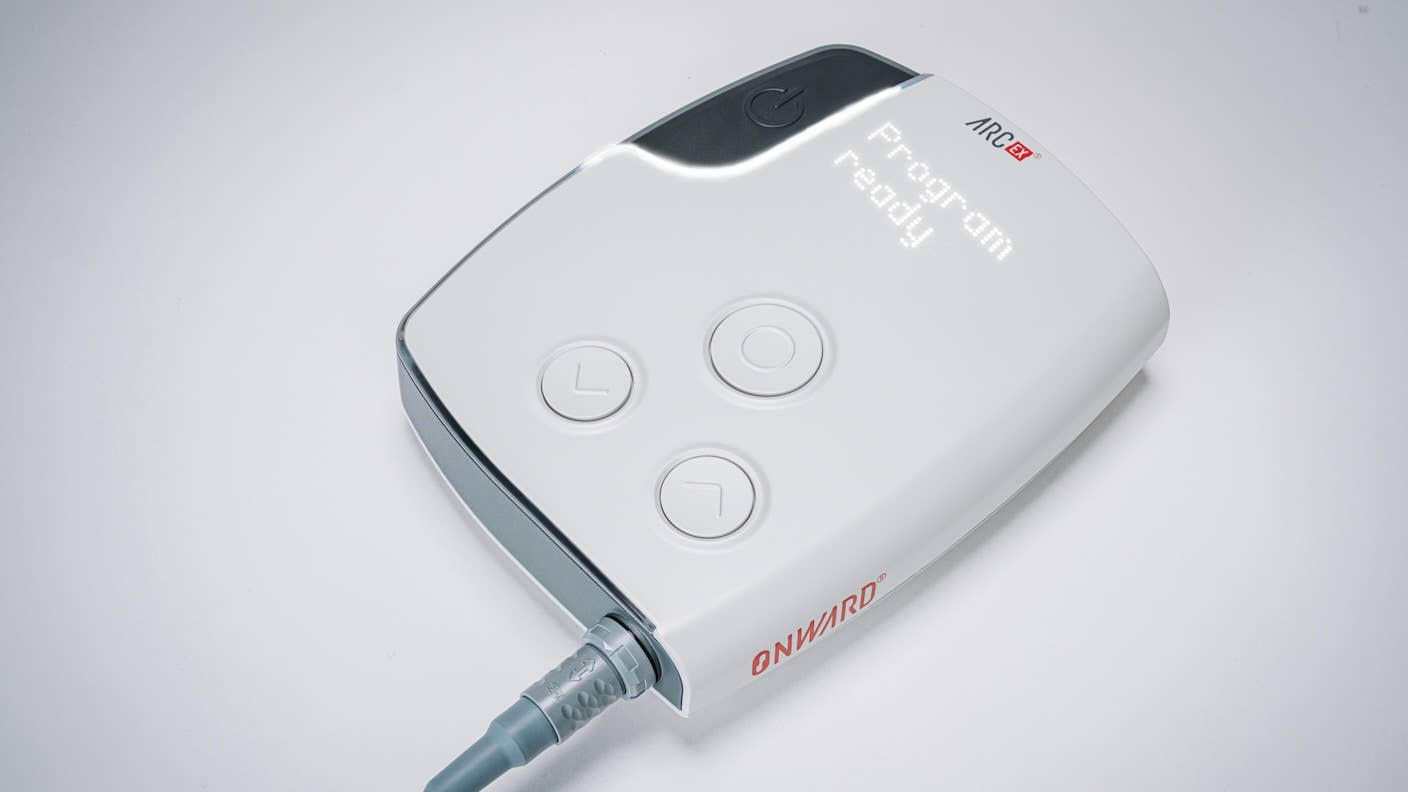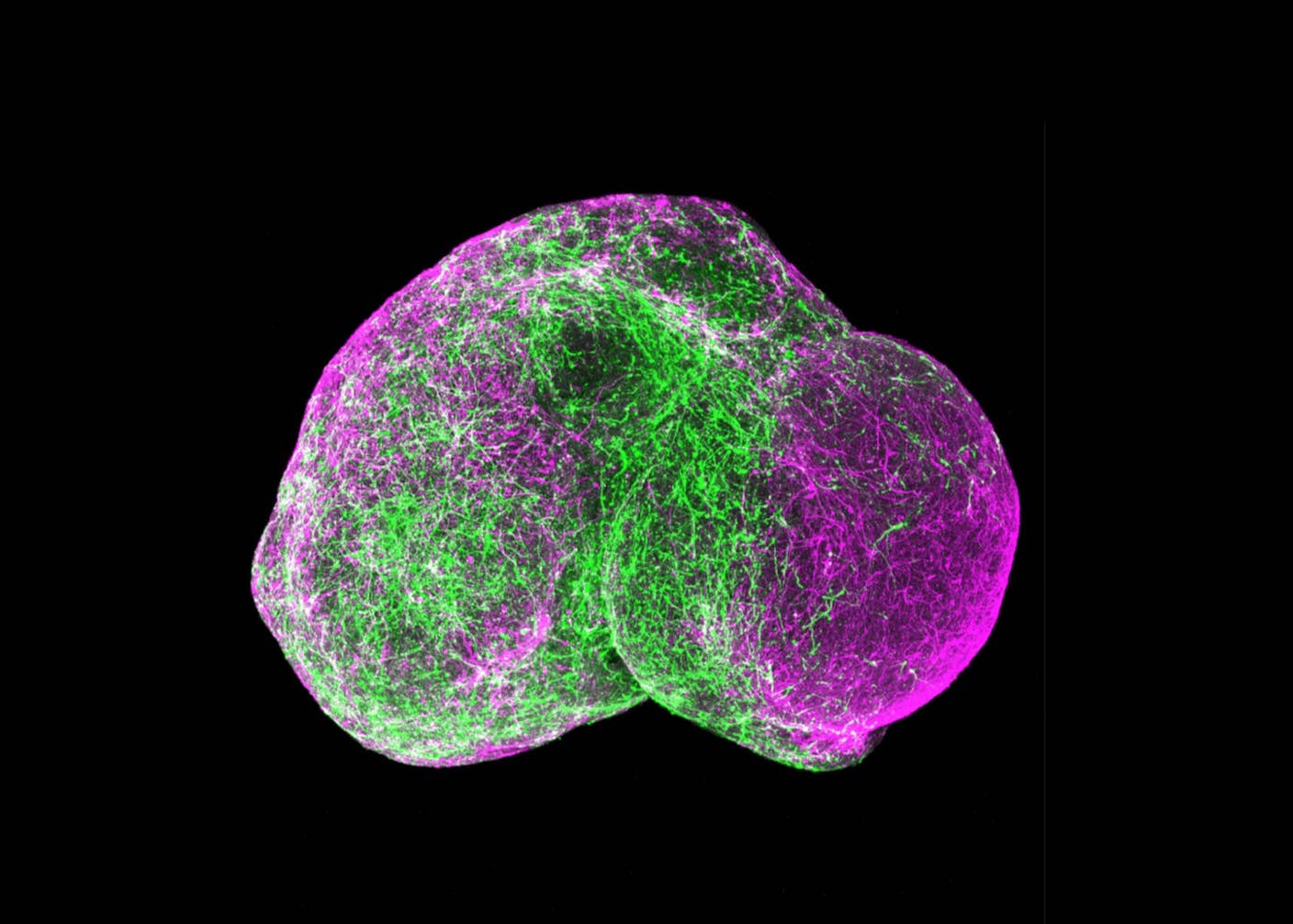This Device Zaps the Spinal Cord to Give Paralyzed People Use of Their Hands Again

Share
Melanie Reid was 52 years old when she hopped onto her horse, fell, and broke her neck. The resulting injury paralyzed her body below the chest area. Fourteen years later and after extensive physical therapy, she has gradually regained some function in her right hand—“a lifeline,” she said in a press conference. But her left hand remained “useless.”
As a journalist, the injury was devasting as she couldn’t type. Even seemingly simple everyday routines—tying her hair up into a ponytail, using an ATM card, or even unwrapping candy—were a struggle.
With the help of a new device, she’s able to do all that after just two months of use. Called ARC-EX therapy, the device zaps residual neural connections around the site of spinal cord injuries. Combined with physical rehabilitation, the treatment restored some functionality in her left hand—even when the stimulation was turned off.
Reid was part of a 60-participant clinical trial that looked to use spinal cord stimulation to regain control of both hands. Similar treatments have shown promise in paraplegic patients, restoring the ability to walk in just a day. But those required surgery to place electrodes on the spinal cord.
ARC-EX therapy, by contrast, delivers two different types of electrical pulses through the skin—no surgery required. Developed by Grégoire Courtine and colleagues at the Swiss Federal Institute of Technology, the device improved hand strength, pinch, and other movements in 72 percent of participants.
Because the device is non-invasive, it’s a simple addition to physical rehabilitation programs—a sort of pilates for the fingers, explained the team. The trial only included two months of stimulation, and extending the timeline could potentially further improve results.
The stimulation only helps with finger and hand dexterity, not walking. But to Reid, that’s what matters. “Everyone thinks that [with] spinal injury all you want to do is to be able to walk again,” she said. But “what matters most is working hands…[and] the gains can be life-changing.”
Broken Bridges
All participants in the trial had a fracture in their spinal cord, roughly at the level of the neck.
With torn nerves, the brain can no longer command the body. Like a broken phone line, when you think “move your hand,” the signal gets lost at the break. Scientists have long tried to bridge this communication “gap” with electrodes to control muscle movement, essentially replacing broken biological wires with artificial ones.
Spinal cord stimulation is one solution. In 2018, a man walked across an entire football field years after he was paralyzed thanks to zaps to his spinal cord. With just a day’s stimulation, people with complete paralysis have been able to stroll around a busy downtown and go kayaking.
The key to recovery, explained the team, is to target living nerves. In a majority of cases, even patients deemed to have a “complete” spinal cord injury still have nerves left, and stimulating them can trigger regrowth and connections.
Picture the spinal cord as a tree, with branches reaching towards the skin. Now, imagine if the “trunk” was partially severed. By zapping the skin around the injury site, it’s possible to transmit electrical signals to the injured spinal cord “trunk” and allow living neurons near the injury site to rebuild neural connections.
“In preclinical models, when applying stimulation, we immediately facilitated movement,” said Courtine. But “even more importantly,” we saw new neuron growth, as if the body was repairing the broken neural system, he added. With sufficient healing, patients could potentially be able to use their hands even without stimulation.
Based on these ideas, the team built the ARC-EX device.
The Trial
The clinical trial included 60 people with neck-level spinal cord injury. All participants underwent two months of physical therapy, followed by another two months of physical therapy combined with ARC-EX stimulation. The group was roughly 46 years old on average.
Be Part of the Future
Sign up to receive top stories about groundbreaking technologies and visionary thinkers from SingularityHub.


For physical rehab, each person practiced movements such as pinching, grasping, or moving the whole arm for an hour each day, up to five times a week. Although the therapy improved arm and hand function, progress plateaued for most patients.
The team then added ARC-EX stimulation, with the electrodes placed above and below the site of injury. During therapy, the team controlled the frequency and strength of the zaps, so it facilitated arm and hand movements without causing any unwanted muscle “jerking.”
The trial was “open label,” meaning both participants and researchers know they’re receiving stimulation. This can be risky business because of the placebo effect—when participants recover because they think they’re getting the actual treatment, rather than, say, sham stimulation. However, with ARC-EX it’s impossible to “blind” the stimulation. Turning the device on immediately causes strange sensations in the participants, with the electrical pulses feeling like “a sort of a buzz,” said Reid. Turning the device off also immediately alerted participants. In one example, Reid said she “was holding a jar with weights with the stimulation on,” but with the stimulation off—unbeknownst to her—she immediately dropped the jar.
In just eight weeks, 72 percent of participants met or exceeded goals for hand strength and dexterity—the ability to grab a mug or pinch a tweezer—as assessed with a battery of tests. Only one person experienced unintended effects—uncontrollable muscle spasms. However, because stimulation was off when they occurred, the team says it’s likely not related to ARC-EX.
The therapy didn’t just improve hand function. The paralyzed participants also felt less pain, had fewer struggles with breathing, and slept better.
Boosted Therapy
The stimulation won’t work for the roughly 10 percent of people with spinal cord injuries that completely severed all neural connections. But for those who still have residual nerve endings, it makes restoring finger movements easier.
Sherown Campbell, another participant in the trial, said ARC-EX is a life-changer. A self-proclaimed “tech geek,” he constantly works on his computer. “Focusing on hand function was the biggest thing I was hoping to improve,” he said.
With ARC-EX therapy, his typing speed increased from 25 words per minute to 33 words per minute, “about a 30 percent increase, which is really significant for me,” he said. But more importantly, his quality of life improved. He can cook and write again—two seemingly simple everyday activities that give him joy but were robbed by his accident.
With the success of this trial, the device may hit the market soon. Because it’s non-invasive, it can easily be integrated into existing physical therapy sessions. The team is already looking for approval in the United States, with discussions with the European Union soon to follow. For now, the price is unknown, although Courtine said the aim is to make it widely accessible.
To Reid, being able to use her left hand is an enormous change to her life. It’s “extraordinary,” she said. “It makes you hold your head up and look at the world differently.”
Image Credit: ONWARD Medical N.V.
Dr. Shelly Xuelai Fan is a neuroscientist-turned-science-writer. She's fascinated with research about the brain, AI, longevity, biotech, and especially their intersection. As a digital nomad, she enjoys exploring new cultures, local foods, and the great outdoors.
Related Articles

AI Can Now Design Proteins and DNA. Scientists Warn We Need Biosecurity Rules Before It’s Too Late.

Kids With Spinal Muscular Atrophy Show Dramatic Improvement With FDA-Approved Gene Therapy

Five-Year-Old Mini Brains Can Now Mimic a Kindergartener’s Neural Wiring. It’s Time to Talk Ethics.
What we’re reading